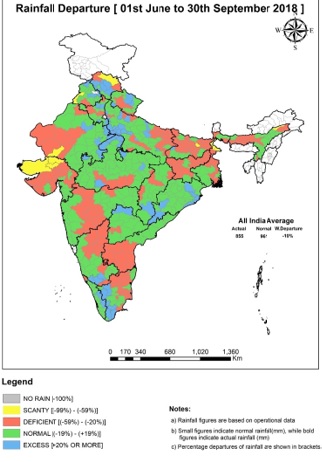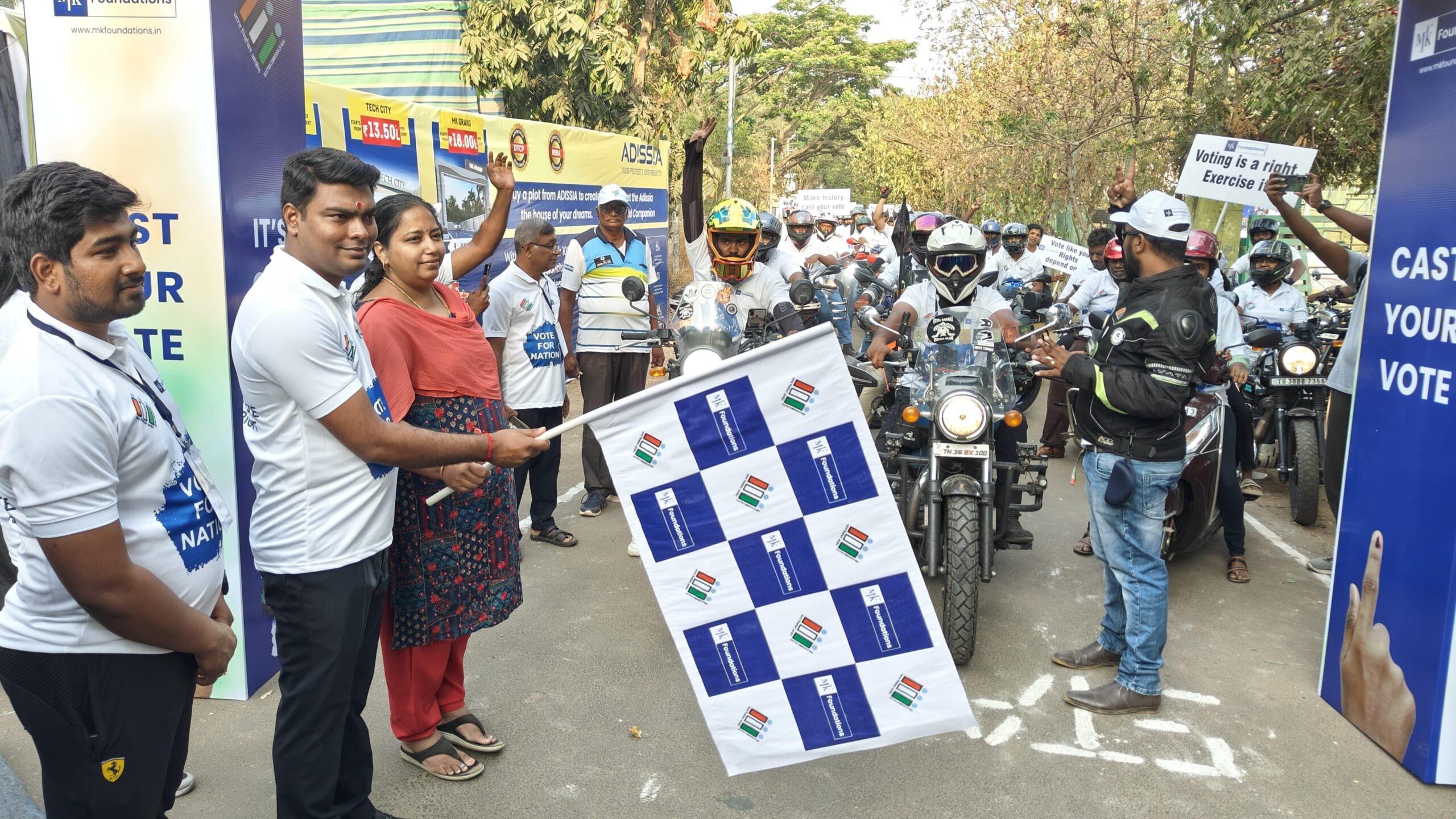Trending Now
- IPL 2024 begins with a bang. First contest between CSK and RCB.
- Election commission allots mike symbol to Naam Thamizhar Katchi
- AIADMK promises to urge for AIIMS in Coimbatore, in its election manifesto.
- Ponmudi becomes higher education minister.
Post
Rainfall Deficit Likely to Cause Surge in Prices for Arhar – Study by Weather Risk Management Services
![]() January 25, 2019
January 25, 2019
The recent CROPWATCH report by Weather Risk Management Services Pvt. Ltd. highlights the impact of rainfall amongst other factors on likely increase in the prices for Red Gram. “The rainfall declined by 59% to 20% in dominant Red Gram producing areas, which is likely to affect Arhar production and prices.” says Mr. Sonu Agrawal, Founder and Managing Director, Weather Risk Management Services Pvt. Ltd. A pioneering smart farming company with a vision to empower farmers to overcome the most daunting agrarian challenges. The company leverages data, technology and financial services to provide holistic solutions that enhance agricultural productivity and secure farmers' income in an environmentally sustainable manner.
The cultivation of crops and its yield are immensely sensitive to climate and weather conditions. Climatological data and weather risk management is essential for agricultural planning because it accounts for the monthly, weekly or even hourly temperature, rainfall, solar radiation, evaporation, wind speed and relative humidity.
Agricultural planning becomes even more tedious because of regional climate change. Studies indicate that during the cropping season, weather parameters strongly influence crop growth. As per a report on the Impact of climatic factors on crop production, it accounted for two-thirds (67%) of the variation in productivity while other factors including soil and nutrient management accounted for a third (33%). The influence of weather conditions is even operative prior to the sowing stage as the moisture content and thermal regime of the seed zone identify the dates for sowing and suitable crop genotypes. Hence, crop cultivation, growth and yield are primarily determined by weather during the growing seasons. Minor deviations may also incur depleted food production.
The ‘pulse’ story
Pulses are annual leguminous crops that yield a dozen different grains or seeds available in variable sizes, shapes and colours within a pod. India being the largest pulse producer and consumer in the world has primarily grown Arhar/Tur, Urad, Moong and Masur. The major sources of protein also help in the restoration of soil fertility and climate change mitigation due to their nitrogen-fixing properties.
Red gram distribution
Arhar dal or red gram in particular, a crucial element in the Indian vegetarian diet is grown across the world. As per agmarknet.gov.in, India particularly boasts of being the largest producer of red gram in the world accounting for 81.49% of total production and 80.59% of the total area of the world. According to the crop-wise and state-wise coverage as on 19th September 2018 published on agricoop.nic.in, the latter number has however decreased considering the area under red gram has fallen from 52.721 lakh hectares in 2016/17 to 45.828 lakh hectares in 2018/19. The major producing states include Maharashtra (12.343 lakh ha), Karnataka (9.920 lakh ha), Madhya Pradesh (6.350 lakh ha), Uttar Pradesh (3.465 lakh ha), Telangana (2.774 lakh ha), Gujarat (2.522 lakh ha) and Andhra Pradesh (2.180 lakh ha), as mentioned on agricoop.nic.in.
Required climatic conditions
The successful cultivation of an Arhar crop requires an average rainfall of 600 mm to 650 mm including moist conditions for the first eight weeks and dry conditions during the flowering and pod development stage; rainfall during the flowering stage causes poor pollination. The Rabi and Kharif crops are adequately grown throughout the year including summer (April), rainy (June) and winter (September).
The semi-arid tropics tolerant crop is tolerant to dry conditions due to its deep-rooted system. The crucial stages of growth include branching, flowering and pod filling where moisture stress causes unfavourable effects. Therefore, absence of rainfall calls for high irrigation.
Arhar requires moist and warm weather where temperatures between 30-35 °C and 20-25 °C are ideal for germination and vegetative growth, respectively. On the other hand, flowering and pod setting requires 15-18 °C while the maturing stage requires higher temperatures around the 40 °C mark. Heavy rains, frost, and water logging and floods are extremely harmful for crop cultivation while hailstorms or rainfall at maturity is detrimental for the entire crop. Hence, it is adequately tolerant of any droughts because of its deep-rooted system.
Current scenario
“The cumulative rainfall across the country continues to be on the depleting side of the long period average. According to our CROPWATCH report, as on 30th September 2018, the country as a whole had a deficiency of about 10% with a deficit being 8% in northwest India – and 30% in east and north east India. Rain fall was deficit in other states of Southern Peninsula including Karnataka, Andhra Pradesh, Telangana and certain parts of Gujrat and Maharashtra. The rainfall declined by 59% to 20% in all these areas, which is speculated to affect Arhar production and prices.” says Mr. Sonu Agrawal, Founder and Managing Director, Weather Risk Management Services Pvt. Ltd.
According to Agricoop, the area of Arhar sown this year (45.828 lakh ha) is close to the normal area sown (41.854 lakh ha; 2013-17). However, the Ministry of Agriculture has deemed the Arhar production to be down by 40% to 50% since last year. This in turn has led to increase in country-level prices by INR 400-500 per quintal in 2018, in comparison to Arhar prices of 2017.
Stress: Rainfall departure of June-September sum rainfall more than 20% from the normal
|
|
|
State wise stressed area in % of |
|
|
|
|
Crop |
State |
State Total |
Country Total |
% districts under stress |
Avg rainfall deficit (June -Sep) in Stressed Districts |
|
Arhar |
Andhra Pradesh |
91% |
6% |
80% |
-34% |
|
Arhar |
Gujarat |
52% |
2% |
50% |
-44% |
|
Arhar |
Karnataka |
100% |
18% |
100% |
-38% |
|
Arhar |
Madhya Pradesh |
14% |
1% |
20% |
-33% |
|
Arhar |
Maharashtra |
51% |
14% |
50% |
-28% |
|
Arhar |
Telangana |
57% |
4% |
40% |
-24% |
|
Arhar |
Uttar Pradesh |
34% |
1% |
33% |
-34% |
|
Arhar |
State |
|
46% |
50% |
-33% |
The same states have also observed substantially low soil moisture. On the other hand, heavy rainfall witnessed during 21st to 24th September 2018 has been harmful for red gram crops going through the harvest stage in Haryana, Madhya Pradesh, Maharashtra and Rajasthan.
 |
Rainfall Departure
“It is crucial to manage risks arising of such unpredictable weather conditions. Weather and climatic information is crucial to minimize costs and analyse the feasibility of crop cultivation. Each crop requires different weather criteria to be met involving soil moisture, temperature, rainfall and wind speed primarily.” Added Mr. Sonu Agrawal, Founder and Managing Director, Weather Risk Management Services Pvt. Ltd.


















